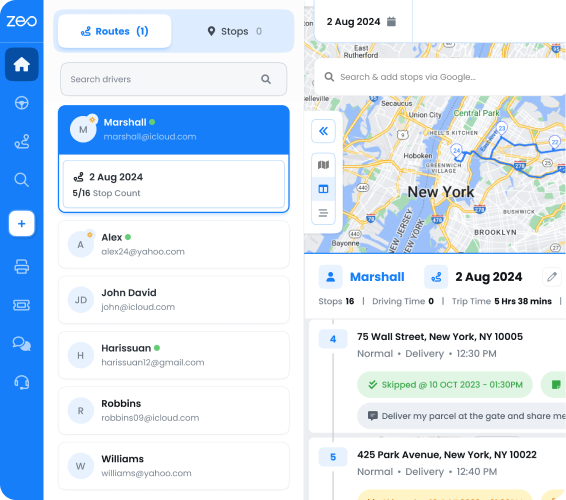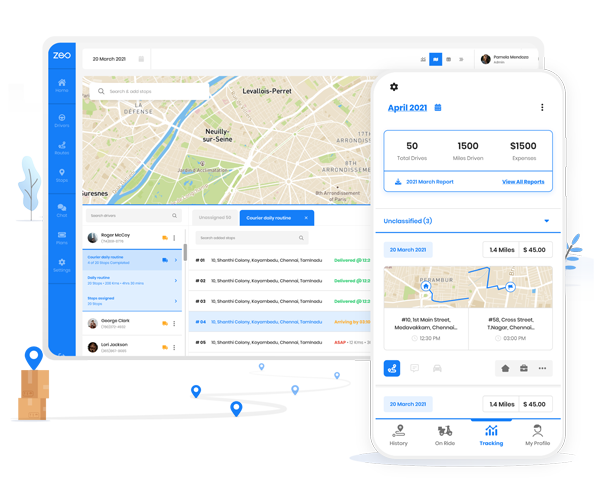With supply chains getting more complex and an increasing number of variables that can impact your business, the question arises –
How to cope when the business environment changes at a break-neck speed?
Don’t worry! We also have the answer to it.
It’s by building an agile supply chain! You need to be prepared to react to the changes and do it fast.
In this blog, we’ll help you understand what is supply chain agility, why it is important, and how you can make your supply chain agile.
What is supply chain agility?
Supply chain agility focuses on flexibility, adaptability, and responsiveness to changing market conditions and customer demands. The goal of an agile supply chain is to be able to quickly and efficiently respond to supply chain disruptions and unforeseen events.
It leverages real-time data along with reliable forecasts, technology, and automation to make quick decisions.
Why is supply chain agility important?
- Meets changing demands
Irrespective of whether the demand is going up or down, having an agile supply chain helps manage it smoothly. In case the demand is increasing, it enables the business to take advantage of it by readily fulfilling it. In case of falling demand, it helps in avoiding overstocking.
- Controls costs
An agile supply chain helps optimize costs by optimizing sourcing, inventory management, transportation logistics, and warehouse operations.
- Customer satisfaction
Customers are expecting faster and more reliable deliveries. Businesses must build agile supply chains with the latest technology and flexible order fulfillment options. Through collaboration between different stakeholders, an agile supply chain helps communicate accurate information to the customers.
- Visibility across the supply chain
Integrating technology and data analysis into your supply chain enables greater visibility across the chain. It allows businesses to track products and information as they move through the supply chain. It also helps in identifying problems at an early stage and taking swift action.
How to make your supply chain agile?
- Demand forecasting
- Use real-time data for inventory management
- Warehouse distribution
- Faster last-mile delivery with more visibility
- Agile relationships with suppliers
Let’s deep dive into each of these points.

increase fuel savings
Save $200 on fuel, Monthly!
Optimize routes with our algorithm, reducing travel time and costs efficiently.
Get Started for Free
- Demand forecasting
Demand forecasting is a good first step toward building an agile supply chain. It means estimating future demand using predictive models based on historical data. Once you have the forecasts, the next step would be to adjust the production levels and scale distribution networks accordingly.
Demand forecasting helps e-commerce businesses be prepared for spikes in demand during special days like Black Friday, Valentine’s Day, or during the holiday season.
- Use real-time data for inventory management
Using real-time data to track inventory levels is of great advantage. Not having enough inventory could lead to losing out on business opportunities. On the other hand, being overstocked would mean additional costs.
If you have visibility of the inventory you can take strategic actions like stocking up well in advance before a sale event. Another strategy would be to offer higher discounts to move the excess inventory.
- Warehouse distribution
You should be tactical about the location of your warehouses to add agility to your supply chain. Fulfilling orders becomes difficult if you depend only on one warehouse and its operations are hampered for any reason.
Consider having a secondary warehouse or partially outsourcing the warehousing. This will not only help in case your primary warehouse is facing disruptions but also help in improving fulfillment speed and reducing shipping costs.
- Faster last-mile delivery with more visibility
To further add speed to your supply chain consider using technologies that help in making faster deliveries. Software like route optimization enables efficient deliveries along with providing visibility into the last leg of the supply chain i.e. last-mile delivery. It allows you to take quick action in case of any unanticipated delays on the road.
Such technology can also be used to provide real-time updates to the customer. It adds to the customer satisfaction and builds a loyal customer base.
Find out how Zeo Route Planner helps you optimize the routes and deliver faster!
- Agile relationships with suppliers
Suppliers are the backbone of your supply chain. However, depending on a sole supplier can prove to be risky. It’s important to build relationships with multiple suppliers to ensure flexibility in the procurement of required items. In case a supplier is not able to meet the requirements, you can switch to another supplier.
Conclusion
Building an agile supply chain is crucial for business success. It helps you to react quickly to any changes by taking efficient decisions using reliable data and information. Supply chain agility could prove to be a key partner if you want to stay ahead of the competition!

Are you a fleet owner?
Want to manage your drivers and deliveries easily?
Grow your business effortlessly with Zeo Routes Planner – optimize routes and manage multiple drivers with ease.

increase fuel savings
Save $200 on fuel, Monthly!
Optimize routes with our algorithm, reducing travel time and costs efficiently.
Get Started for Free




















